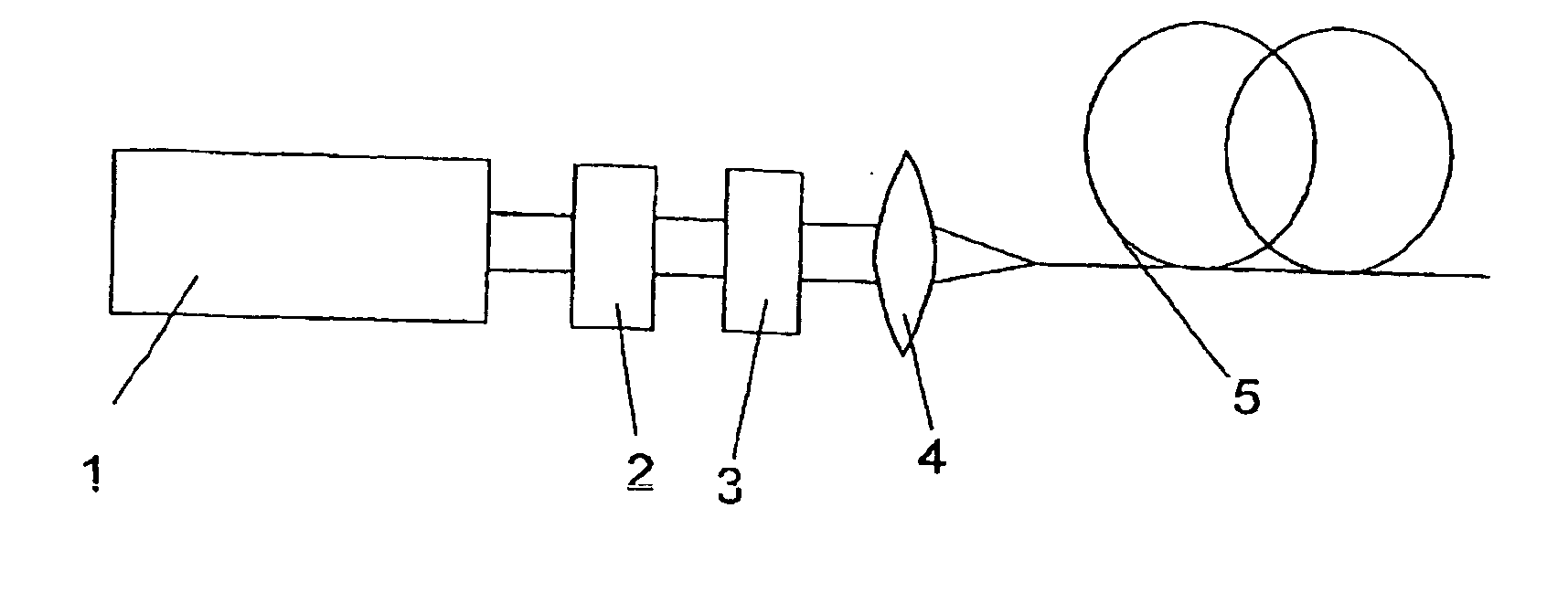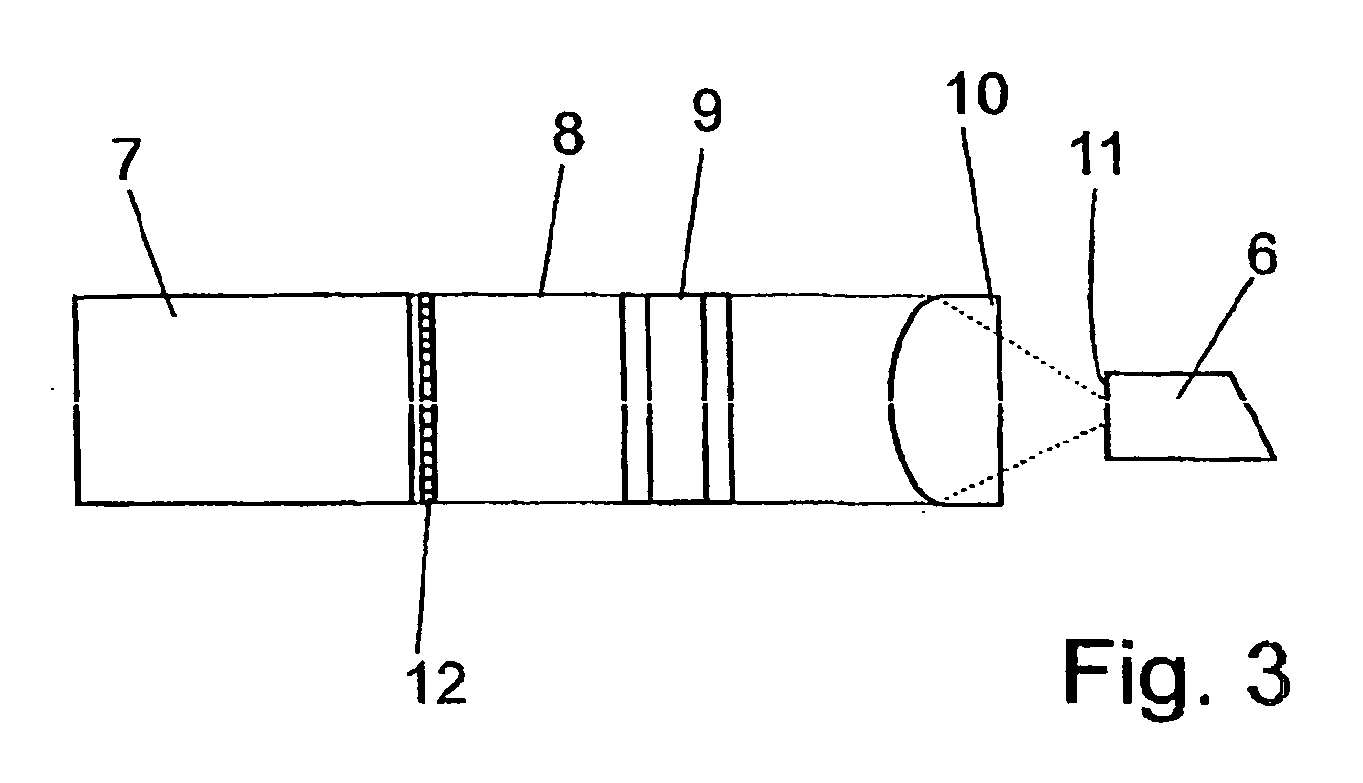Method and optical arrangement for the generation of a broadband spectrum
a technology of optical arrangement and broadband spectrum, applied in the direction of optics, laser details, instruments, etc., can solve the problems of large, maintenance-intensive and cost-intensive, and the portion of generated output remains unused, and achieve the effect of simple construction and efficient operation
- Summary
- Abstract
- Description
- Claims
- Application Information
AI Technical Summary
Benefits of technology
Problems solved by technology
Method used
Image
Examples
Embodiment Construction
[0027] The broadband radiation source according to FIG. 1 comprises a passively mode-coupled solid-state laser 1 having a mode-coupled resonator operating with saturable semiconductor absorbers and with a plurality of deflecting mirrors and an end mirror and is protected against feedback by an optical isolator 2. A nonlinear optical crystal 3 is provided downstream of the solid-state laser 1 along the beam path for wavelength transformation to the visible spectral region. The radiation is coupled by in-coupling optics 4 with a frequency conversion element in the form of a nonlinear optical fiber 5, particularly a photonic fiber.
[0028] The solid-state laser 1 which has an average output power of 6 W supplies laser pulses in an output wavelength in the infrared region of λ=1064 nm with a pulse duration of about 9 ps whose spectral bandwidth is 0.3 nm. Further, the present embodiment example operates with a pulse repetition rate of 120 MHz, an average pulse energy of 50 nJ and an aver...
PUM
 Login to View More
Login to View More Abstract
Description
Claims
Application Information
 Login to View More
Login to View More - R&D
- Intellectual Property
- Life Sciences
- Materials
- Tech Scout
- Unparalleled Data Quality
- Higher Quality Content
- 60% Fewer Hallucinations
Browse by: Latest US Patents, China's latest patents, Technical Efficacy Thesaurus, Application Domain, Technology Topic, Popular Technical Reports.
© 2025 PatSnap. All rights reserved.Legal|Privacy policy|Modern Slavery Act Transparency Statement|Sitemap|About US| Contact US: help@patsnap.com



